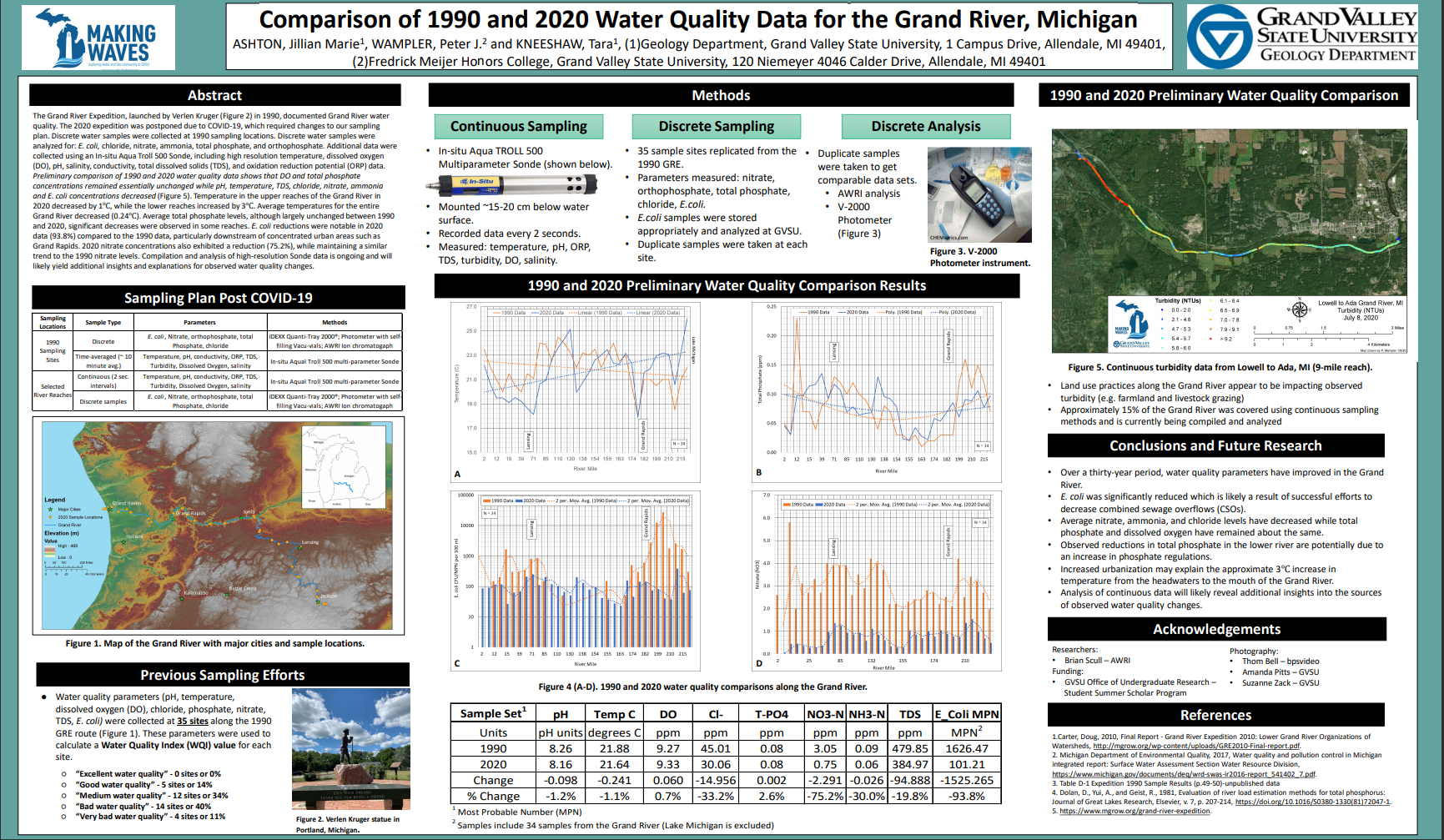Comparison of 1990 and 2020 Water Quality Data for the Grand River, Michigan by GVSU Making Waves Initiative
ASHTON, Jillian Marie1, WAMPLER, Peter J.2 and KNEESHAW, Tara1, (1)Geology Department, Grand Valley State University, 1 Campus Drive, Allendale, MI 49401, (2)Fredrick Meijer Honors College, Grand Valley State University, 120 Niemeyer 4046 Calder Drive, Allendale, MI 49401
Abstract
The Grand River Expedition, launched by Verlen Kruger (Figure 2) in 1990, documented Grand River water quality. The 2020 expedition was postponed due to COVID-19, which required changes to our sampling plan. Discrete water samples were collected at 1990 sampling locations. Discrete water samples were analyzed for: E. coli, chloride, nitrate, ammonia, total phosphate, and orthophosphate. Additional data were collected using an In-situ Aqua Troll 500 Sonde, including high resolution temperature, dissolved oxygen (DO), pH, salinity, conductivity, total dissolved solids (TDS), and oxidation reduction potential (ORP) data. Preliminary comparison of 1990 and 2020 water quality data shows that DO and total phosphate concentrations remained essentially unchanged while pH, temperature, TDS, chloride, nitrate, ammonia and E. coli concentrations decreased (Figure 5). Temperature in the upper reaches of the Grand River in 2020 decreased by 1℃, while the lower reaches increased by 3℃. Average temperatures for the entire Grand River decreased (0.24℃). Average total phosphate levels, although largely unchanged between 1990 and 2020, significant decreases were observed in some reaches. E. coli reductions were notable in 2020 data (93.8%) compared to the 1990 data, particularly downstream of concentrated urban areas such as Grand Rapids. 2020 nitrate concentrations also exhibited a reduction (75.2%), while maintaining a similar trend to the 1990 nitrate levels. Compilation and analysis of high-resolution Sonde data is ongoing and will likely yield additional insights and explanations for observed water quality changes.
Conclusions and Future Research
Over a thirty-year period, water quality parameters have improved in the Grand River.
E. coli was significantly reduced which is likely a result of successful efforts to decrease combined sewage overflows (CSOs).
Average nitrate, ammonia, and chloride levels have decreased while total phosphate and dissolved oxygen have remained about the same.
Observed reductions in total phosphate in the lower river are potentially due to an increase in phosphate regulations.
Increased urbanization may explain the approximate 3℃ increase in temperature from the headwaters to the mouth of the Grand River.
Analysis of continuous data will likely reveal additional insights into the sources of observed water quality changes.

